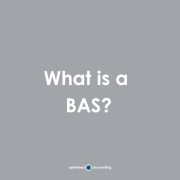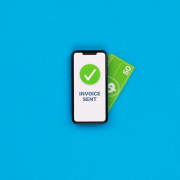In the past, monitoring of superannuation payments was not as stringent as it is now. If employees did not regularly read their super statements or check their balances, it is entirely possible that super could go unpaid – and unnoticed by the employee. Legislative changes and technology means that this should become a thing of the past.
Super guarantee requires employers to contribute a minimum percentage of each eligible employee’s earnings to a complying super fund. This is to be paid by the employer to the super fund on a quarterly basis.
What has changed?
With the implementation of Single Touch Payroll (STP) to Small Employers (Under 19 employees), employers are now required to report every payrun to the ATO.
This includes employee’s:
- Salaries and wages
- Pay as you go (PAYG) withholding
- Super Guarantee (SG) information
Through STP the ATO now has clear visibility SG that is owed to an employee, from the employee’s side they can see all of the contributions made to the employee’s superfund. Data matching means the ATO can now identify employees who are not receiving the SG they are entitled to.
So what are the deadlines?
The date super has been paid is taken to be the date that the payment hits the employee’s super account, not the date that the employer pays the super. As it can take a number of days for a super contribution to clear through a super clearing house and hit the employee’s account we always recommend employers pay their super a number of days prior to the due date.
Quarter due dates
Employee Superannuation is paid in quarters, and is very important that it’s on time.
Quarter 1 (July, August, September)
Due 28th October 2022 (to ensure deadline is met, please put through Xero batches by 15th October 2022).
Quarter 2 (October, November, December)
Due 28th January 2023 (to ensure deadline is met, please put through Xero batches by 15th January 2023).
Quarter 3 (January, February, March)
Due 28th April 2023 (to ensure deadline is met, please put through Xero batches by 15th April 2023).
Quarter 4 (April, May, June)
Due 28th July 2023 (to ensure deadline is met, please put through Xero batches by 15th July 2023).
What happens if an employer does pay super late?
If the super payment is even 1 day late, the employer will need to prepare a Super Guarantee Charge Statement for the quarter and lodge it with the ATO. The Super Guarantee Charge (SGC) is what the employer will need to pay the ATO as a result of late payment of superannuation.
Late super is not tax deductible so paying late means a lost tax deduction.
The SG Charge is not calculated based on Ordinary Time Earnings (OTE) as normal super guarantee is. SGC is calculated as 9.5% (current SG rate) of the Gross Earnings of the employee – in simple terms, this means super is now payable on any overtime earnings – which would have been exempt from super, had it been paid on time.
The SGC will be made up of three amounts:
- SG Shortfall (Gross earnings X current SG rate)
- Nominal Interest (10% per year which is calculated on a daily basis)
- Administration Fee ($20 per employee)
However, once the total charge is calculated you can subtract the amount that was paid late to reduce the charge you owe. This is called a “Late payment offset”. The remainder will be the SGC Charge payable to the ATO.
The interest included in the above calculation is passed on by the ATO to the employee to compensate them for late payment.
It is imperative that Super is paid on time as directors will be personally liable for employee’s super guarantee!
To download the ATO’s Super Guarantee Charge (SGC) statement, please click here and scroll down to the link shown below:

This is an excel document and you will need to save it as a PDF and send back to the ATO. There are instructions on the document.
Case study
We assisted a Trucking Company who were audited by the ATO for late and unpaid employee SGC from July 2017 to September 2019. We prepared 9 SGC Charge Statements in total.
The Auditor asked for:
- Quarterly Payroll reports showing all employees
- Contribution reports sent to the clearing house/ super funds
- Confirmation of payments clearing through the company’s bank accounts
- SGC Charge Statements for all unpaid SGC from July 2017
From July 2017 to September 2019, had they paid all of their super on time, the total Superannuation expense would have been $69,000 – and fully tax deductible. Of this $69,000, the Trucking company had paid $45,000, which was all paid late.
Because of the late payment, SG Charge statements were required. When calculating the SGC – super is to be calculated based on Gross Earnings (including Ordinary Earnings, Overtime, Allowances) – not Ordinary Time Earnings as is the case when super is paid on time.
Being a trucking company, staff had worked substantial overtime that would have been exempt from super had it been paid on time. Super on gross earnings in this case was $109,000 – an additional $40,000 super payable on overtime earnings due to late payment.
On top of the SGC Shortfall of $109,000, nominal interest of $15,000 and admin fees of $1,400 were added.
This brought their total charge to over $125,000. We were able to apply the late super they had paid of $45,000 as a “late offset” to reduce the SGC to $80,000.
On this $80,000 the auditor calculated an additional penalty of $112,000 which could have seen the directors personally liable for $192,000 that is NOT tax deductible. Luckily for the directors, the auditor, upon reviewing the circumstances, decided to fully remit the penalty. However, since this case SGC laws have changed which require the auditor to apply a minimum penalty on top of the SG Charge which can be up to 200% of the charge.
Looking to boost your super?
As a side note, if you are looking to add an additional Superannuation contribution yourself, you also need to fill in an ‘intent to claim’ form with the ATO. Find it here.
Be even more on top of business pitfalls
You’re a business that stays in tune with your finances to stay ahead. So does our newsletter, so come on board for more heads-up:










